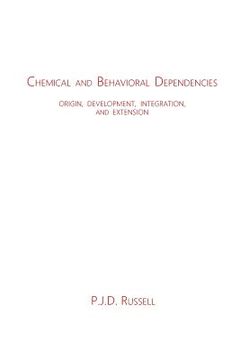Chemical and Behavioral Dependencies: Origin, Development, Integration, and Extension (in English)
Synopsis "Chemical and Behavioral Dependencies: Origin, Development, Integration, and Extension (in English)"
The chemical and behavioral dependencies were shown by a model based on alcohol consumption to have a common origin and progression. Their shared etiology revealed three invariant developmental stages whose lengths are shaped by age and whether elevations of arousal are brief or extended. Dependencies are utilitarian; they are used to adjust recurring episodes of excessive arousal to the levels required for effective functioning in intended involvements. Control over intake is demonstrated throughout dependency careers in numerous situations and by the broad range of benefits earned reliably with them. Narrowly generalized dependencies promote personal development and societal cohesion whereas wide generalization disrupts individual maturation and is destructive of communities. Knowledge of the arousal model empowers self-regulated use, reduces misuse, and lowers societal costs. The first six chapters identify the factors that decrease or increase susceptibility to a dependency. Chapters seven through 11 detail the course of dependence on alcohol. Chapters 12, 13, and 14 extend the model other chemicals, to behaviors, and to related conditions. The remaining three chapters (15, 16, and 17) describe the broad range of influences that support independence, discuss implications of the model to society, and summarize its main points for quick review. Access to this book is eased by its step-by-step development, by minimal use of technical terms, and by examples drawn from everyday life. The arousal model applies to chemicals (alcohol, marijuana, opiates, sedatives, and stimulants), to behaviors (gambling, institutions, overeating, sexual orgasm, and work), and extends to aggression, anorexia, bulimia, and depression. The dependencies are implicated as the causal mechanism in autism, the obsessive compulsions, postpartum depression, and the post-traumatic stress disorder. This book will interest those who want to understand how initial use advances to misuse, and its opposite, how dependence becomes independence. (The concepts of a 'mental health disorder' and of 'being in recovery' are inconsistent with this thesis.) Others who may derive advantage from this work are the families and friends of dependent persons and those who work in this area, e.g, counselors, physicians, psychologists, and social workers. In addition, this book may serve as a guide to educators, lawyers, police, politicians, and scientists when their work intersects with the dependencies.

